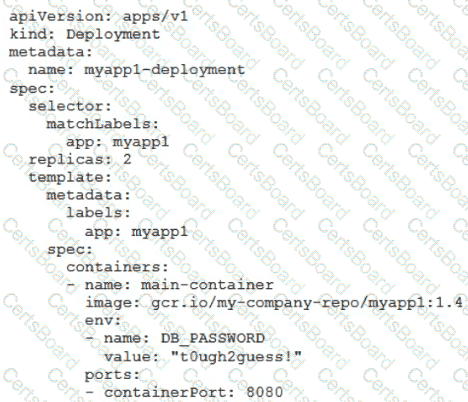(You are managing an application deployed on Cloud Run. The development team has released a new version of the application. You want to deploy and redirect traffic to this new version of the application. To ensure traffic to the new version of the application is served with no startup time, you want to ensure that there are two idle instances available for incoming traffic before adjusting the traffic flow. You also want to minimize administrative overhead. What should you do?)
(You are migrating your on-premises workload to Google Cloud. Your company is implementing its Cloud Billing configuration and requires access to a granular breakdown of its Google Cloud costs. You need to ensure that the Cloud Billing datasets are available in BigQuery so you can conduct a detailed analysis of costs. What should you do?)
You have sensitive data stored in three Cloud Storage buckets and have enabled data access logging. You want to verify activities for a particular user for these buckets, using the fewest possible steps. You need to verify the addition of metadata labels and which files have been viewed from those buckets. What should you do?
Your company completed the acquisition of a startup and is now merging the IT systems of both companies. The startup had a production Google Cloud project in their organization. You need to move this project into your organization and ensure that the project is billed lo your organization. You want to accomplish this task with minimal effort. What should you do?
You’ve deployed a microservice called myapp1 to a Google Kubernetes Engine cluster using the YAML file specified below:

You need to refactor this configuration so that the database password is not stored in plain text. You want to follow Google-recommended practices. What should you do?
You want to set up a Google Kubernetes Engine cluster Verifiable node identity and integrity are required for the cluster, and nodes cannot be accessed from the internet. You want to reduce the operational cost of managing your cluster, and you want to follow Google-recommended practices. What should you do?
You recently deployed a new version of an application to App Engine and then discovered a bug in the release. You need to immediately revert to the prior version of the application. What should you do?
Your customer wants you to create a secure website with autoscaling based on the compute instance CPU load. You want to enhance performance by storing static content in Cloud Storage. Which resources are needed to distribute the user traffic?
Your team is using Linux instances on Google Cloud. You need to ensure that your team logs in to these instances in the most secure and cost efficient way. What should you do?
You need to provide a cost estimate for a Kubernetes cluster using the GCP pricing calculator for Kubernetes. Your workload requires high IOPs, and you will also be using disk snapshots. You start by entering the number of nodes, average hours, and average days. What should you do next?


